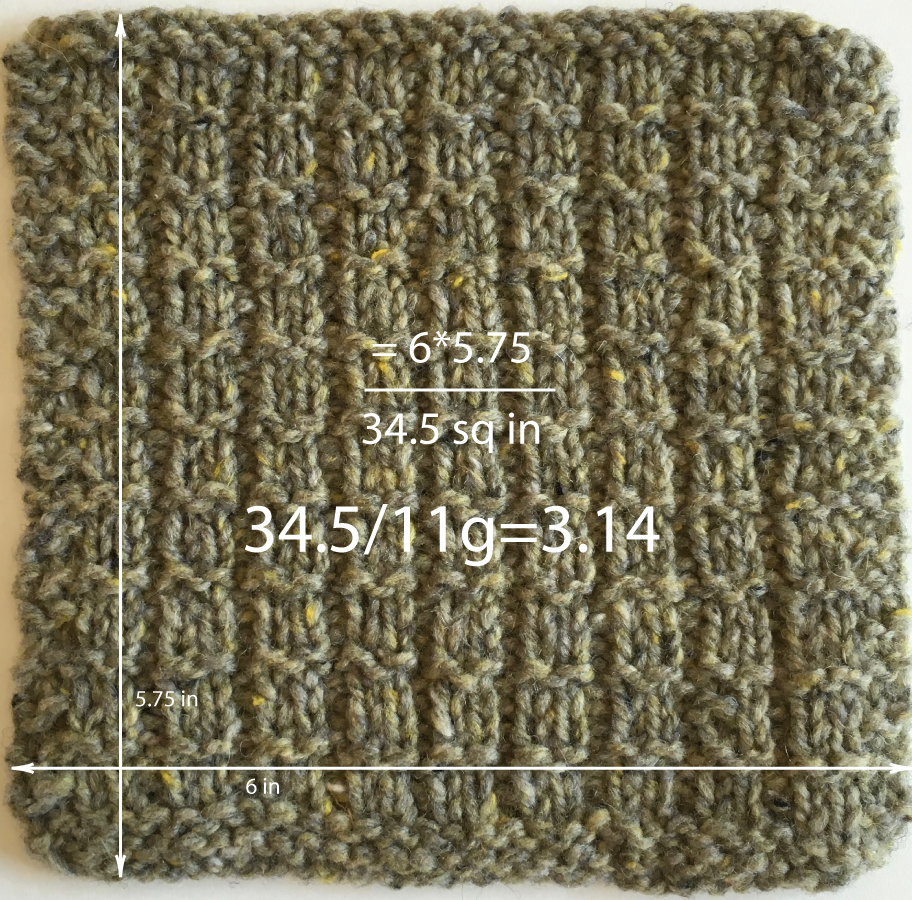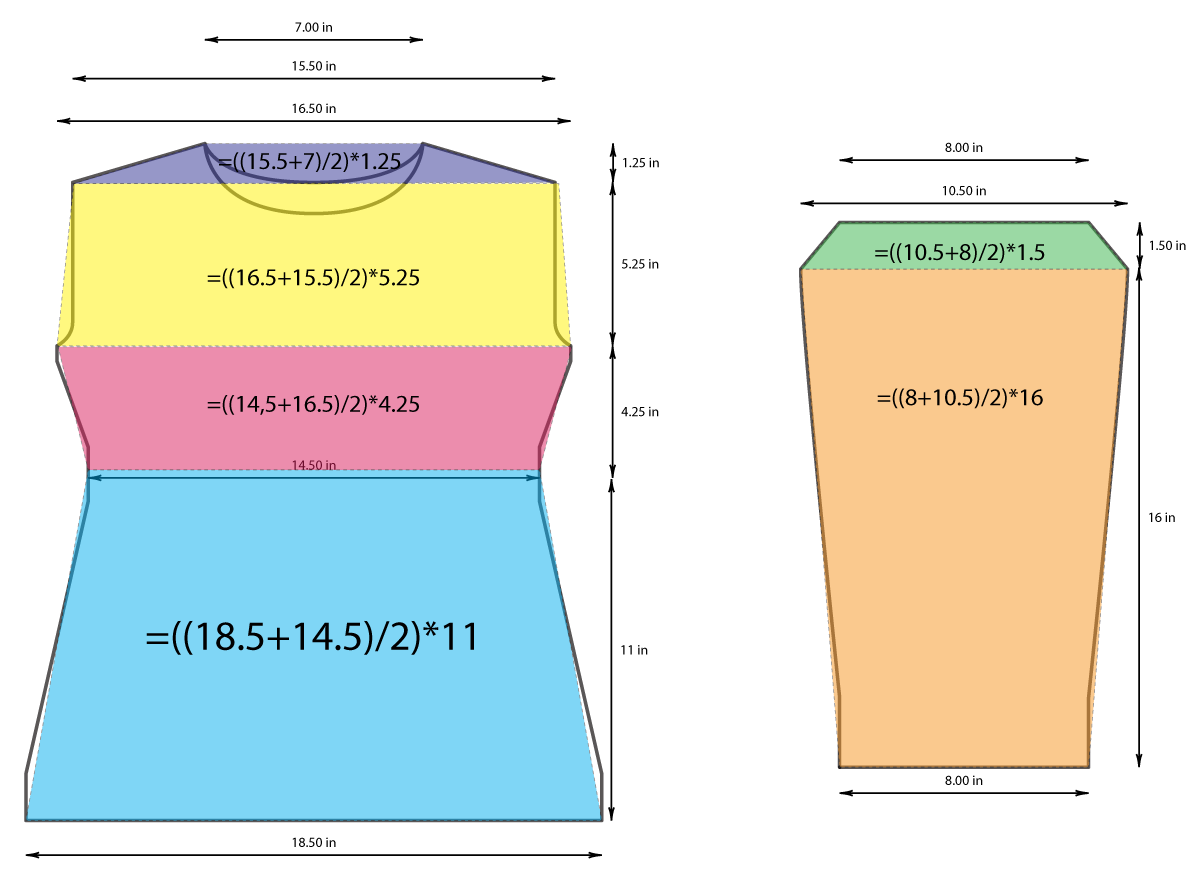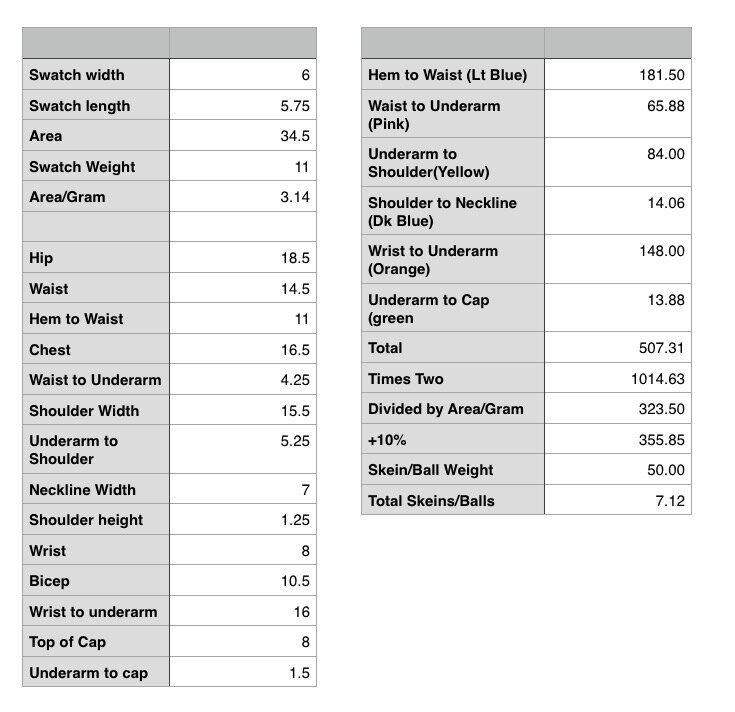Calculating Yardage for Knitted Items
 A quick post today, because my dashing husband pointed out that I hadn't written in a while.A frequently asked question is how to go about calculating the yardage needed for a garment. Perhaps you'd like a different yarn than was used in the pattern, have made major modifications or are simply planning an original design. Whatever the reason may be, you'll be able to calculate fairly accurately what you'll need with a swatch, a calculator and a scale.Don't have a scale? Believe me, you need one. I now only use baking recipes which include the weight of ingredients. I place a bowl on top of the scale and dump one ingredient after the other, taring after each addition. But I digress.First, measure your swatch. The example shown above measures 5.75" by 6", for an area of 34.5 sq in when multiplied together. Divide this number by the weight of the swatch, in this case 11g, to obtain the area of a gram. The resulting number is 3.14.
A quick post today, because my dashing husband pointed out that I hadn't written in a while.A frequently asked question is how to go about calculating the yardage needed for a garment. Perhaps you'd like a different yarn than was used in the pattern, have made major modifications or are simply planning an original design. Whatever the reason may be, you'll be able to calculate fairly accurately what you'll need with a swatch, a calculator and a scale.Don't have a scale? Believe me, you need one. I now only use baking recipes which include the weight of ingredients. I place a bowl on top of the scale and dump one ingredient after the other, taring after each addition. But I digress.First, measure your swatch. The example shown above measures 5.75" by 6", for an area of 34.5 sq in when multiplied together. Divide this number by the weight of the swatch, in this case 11g, to obtain the area of a gram. The resulting number is 3.14.  Next, decide how to segment your schematic into parallelograms (please note that these measurements do not represent a real pullover). Each of the section in the above illustration depicts a different area and the accompanying calculation. For the light blue section from hem to waist, you'll need to add the width of each (18.5"+14.5") before dividing by two. The resulting number (16.5") is then multiplied by the length from hem to waist (11") for a resulting area of 181.5 sq in.Repeat this calculation for each section. In this case, the total area is 507.31. My calculations are always done using spreadsheets, as you can see below:
Next, decide how to segment your schematic into parallelograms (please note that these measurements do not represent a real pullover). Each of the section in the above illustration depicts a different area and the accompanying calculation. For the light blue section from hem to waist, you'll need to add the width of each (18.5"+14.5") before dividing by two. The resulting number (16.5") is then multiplied by the length from hem to waist (11") for a resulting area of 181.5 sq in.Repeat this calculation for each section. In this case, the total area is 507.31. My calculations are always done using spreadsheets, as you can see below:  As can be seen in the spreadsheet notes, I've doubled the area to represent the front and back as well as both sleeves. For safety's sake, it's always a good idea to add a little extra to ensure not to come up short, so I've multiplied the resulting weight by 1.1 to add 10% to the final amount: 323.5*1.1= 355.85. Without the safety allowance, it might have been feasible to knit this sweater with 7 balls as the result was 6.47 balls - but that would make me nervous. Your mileage may vary.Questions? I know this may be quite obvious to some of you, but I've hopefully helped someone out there.
As can be seen in the spreadsheet notes, I've doubled the area to represent the front and back as well as both sleeves. For safety's sake, it's always a good idea to add a little extra to ensure not to come up short, so I've multiplied the resulting weight by 1.1 to add 10% to the final amount: 323.5*1.1= 355.85. Without the safety allowance, it might have been feasible to knit this sweater with 7 balls as the result was 6.47 balls - but that would make me nervous. Your mileage may vary.Questions? I know this may be quite obvious to some of you, but I've hopefully helped someone out there.
